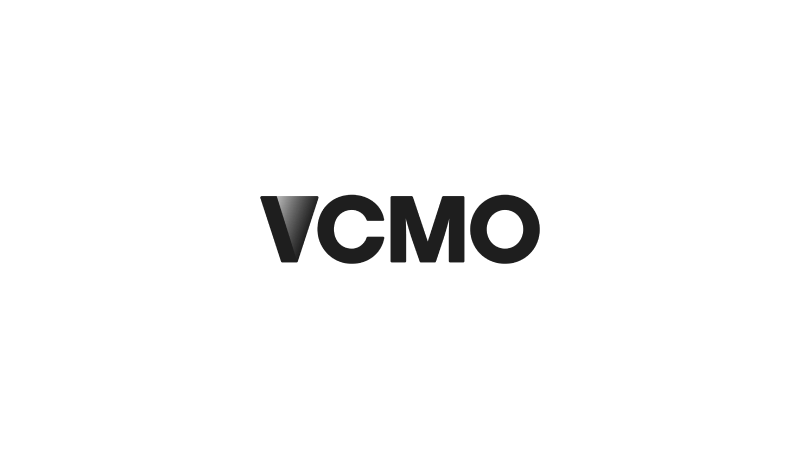From first conversation to strategy delivery—what a Fractional CMO engagement really looks like.
Introduction: Setting Expectations
Engaging a Fractional Chief Marketing Officer (CMO) is not a casual decision. For CEOs, founders, and investors, it represents a strategic commitment to embed senior marketing leadership at the right scale and moment in the business lifecycle. Yet one of the most common questions from leaders considering this model is simple: how does an engagement actually begin?
The answer matters, because the way a Fractional CMO integrates into the business sets the tone for the entire relationship. A structured, well-defined start ensures that leadership impact is felt quickly, that expectations are aligned across stakeholders, and that the business can measure value from the outset. Conversely, vague beginnings often lead to fragmented activity, weak accountability, and missed opportunities.
This article outlines what a typical engagement looks like when executed well. From the initial consultation and diagnostic sprint through to strategy development, contracting, and delivery, we explore the stages that turn a first conversation into measurable business impact. We also highlight the role the client plays in ensuring success, and the risks to watch for in poorly managed engagements. By understanding this process, leaders can approach a Fractional CMO relationship with clarity, confidence, and the foundation for sustained results.
Initial Consultation & Assessment
Every effective Fractional CMO engagement begins with a structured consultation. This is not a sales pitch, but a discovery process designed to understand the business, test alignment, and identify where marketing leadership can create the greatest impact. The emphasis at this stage is on clarity—both for the client and for the Fractional CMO.
A deep dive into the business context is the first step. This includes reviewing the current growth trajectory, revenue model, customer base, and competitive landscape. The goal is to understand how marketing supports—or fails to support—the commercial strategy. Alongside this, the Fractional CMO will assess the maturity of existing marketing activity, from brand positioning to digital presence and team capability.
Equally important is stakeholder engagement. Input is gathered from leadership, finance, sales, and, where relevant, investors to build a balanced view of expectations. This ensures marketing priorities are aligned with board-level objectives rather than being shaped in isolation.
Finally, this consultation is also a chemistry check. Fit matters as much as capability. Businesses need to know that the CMO can integrate with their culture and leadership style, while CMOs need confidence that the environment supports accountability and delivery.
“The first consultation sets the tone. When it is structured around commercial alignment and stakeholder clarity, it becomes clear whether marketing leadership can truly influence growth.”
Lydia McClelland - Chartered Fractional CMO, VCMO
Strategy Development
Once the initial consultation clarifies the current state, the next stage is to design a strategy that connects marketing directly to business outcomes. This is where a Fractional CMO moves from diagnosis to leadership—defining the roadmap that will guide execution and create accountability.
The first task is to establish strategic priorities. A business may have multiple opportunities, but not all are equally valuable or urgent. The Fractional CMO helps leadership prioritise by distinguishing quick wins that build momentum from longer-term initiatives that support sustainable growth. This ensures resources are allocated where they can deliver maximum impact.
Next comes goal and KPI setting. These are not limited to marketing metrics such as leads or impressions but extend to commercial outcomes such as pipeline contribution, revenue growth, or customer lifetime value. By setting goals at this level, the CMO ensures marketing is measured against outcomes that matter to the board.
A final element is the capability review. This includes assessing team skills, technology infrastructure, and partner ecosystem. Gaps are identified and recommendations made for tools, processes, or hires required to support the strategy. Together, these steps create a practical, commercially aligned roadmap that balances ambition with feasibility.
Contract & Logistics
With a strategy framework in place, the next step is to formalise the engagement. This stage is critical: clear contracting and logistics create the foundation for accountability and prevent misalignment later. High-quality Fractional CMO services treat this not as an administrative hurdle but as part of the value proposition.
The scope of work is defined first. This details the role of the Fractional CMO, the level of time commitment, and the expected deliverables. Engagement models can vary—from ongoing retainers, to fixed-price projects, to advisory roles—and clarity here ensures both sides understand the boundaries of responsibility.
Alongside scope comes governance. This includes how performance will be reported, how often the CMO attends leadership meetings, and what cadence is set for updates to the board or investors. Establishing this rhythm early ensures marketing leadership is integrated into decision-making rather than operating in isolation.
Practical considerations follow. These include access to systems and tools, cyber risk, onboarding to communication platforms, and confidentiality agreements. Forward-thinking engagements also define an offboarding process, ensuring knowledge transfer and continuity if the relationship concludes. By addressing both legal and operational logistics upfront, businesses gain confidence that the engagement is structured, transparent, and aligned with their commercial priorities.
“A well-drafted scope and governance model is more than paperwork—it is the framework that defines accountability and ensures marketing leadership is integrated at board level.”
Strategic Sprint & Audit
Once the contractual framework is in place, most Fractional CMO engagements begin with a concentrated diagnostic phase—often called a strategic sprint or marketing audit. The purpose of this stage is to establish a shared understanding of the current state of marketing and to create the foundation for action.
The sprint typically covers a comprehensive audit of marketing activities, systems, and outcomes. This includes reviewing brand positioning, messaging consistency, demand generation performance, digital channels, sales alignment, and customer data. The analysis is both internal and external, benchmarking the business against competitors and assessing overall market dynamics.
Equally important is prioritisation. Businesses often face a long list of challenges and opportunities, but not all are equal in urgency or impact. A Fractional CMO helps leadership distinguish between initiatives that will generate early momentum and those requiring sustained investment. This prioritisation process ensures resources are deployed efficiently.
The outcome is a Growth Blueprint—a clear plan that highlights gaps, opportunities, and immediate actions. By the end of the sprint, both client and CMO are aligned on the starting point, the priorities, and the measures of success. This diagnostic foundation reduces risk and accelerates time to impact.
Engagement Delivery
Once the diagnostic sprint establishes a roadmap, the engagement shifts into delivery. At this stage, the Fractional CMO becomes an embedded leader, working alongside the executive team and marketing team to implement strategy, monitor performance, and build long-term capability.
Delivery operates across three layers of responsibility. The first is strategic leadership: ensuring that marketing priorities stay aligned with board-level objectives, attending leadership meetings, and providing commercial input to wider business decisions. This places marketing firmly within the strategic agenda rather than as a siloed function.
The second is executional oversight. While not directly running campaigns, the Fractional CMO manages teams, agencies, and budgets to ensure delivery stays on track. They act as the link between strategy and execution, holding all contributors accountable for results.
The third is capability building. A hallmark of effective Fractional CMO services is leaving the organisation stronger than before. This includes mentoring staff, refining processes, embedding technologies, and ensuring that marketing performance can be sustained beyond the engagement.
Performance is tracked through dashboards and KPIs, with regular feedback loops and quarterly recalibration to adjust to market conditions. In this way, the engagement remains agile while maintaining discipline and accountability.
“The best Fractional CMO engagements go beyond quick wins. They deliver strategy, oversight, and capability building—leaving behind a stronger marketing function than the one they inherited.”
Rachael Wheatley - Chartered Fractional CMO, VCMO
Client Role in Success
A Fractional CMO can provide the strategy, leadership, and frameworks for growth, but the success of an engagement also depends on the client. Businesses that see the greatest impact recognise that this is a partnership, not outsourcing. Their role includes creating the environment in which marketing leadership can thrive.
- Leadership alignment - Senior executives must align around the importance of marketing. Without shared commitment at the top, even the best strategy risks being undermined by competing priorities or inconsistent support.
- Transparency of data - Fractional CMOs rely on accurate information to diagnose issues and measure progress. Businesses must provide access to financials, sales data, customer insights, and performance dashboards.
- Willingness to implement - Strategy without execution delivers little value. Clients must ensure resources—whether internal teams or external partners—are available to implement recommendations effectively and on time.
- Open communication - Engagements succeed when dialogue is candid and continuous. Feedback, both positive and critical, enables the CMO to adapt and ensures there are no surprises when reporting to stakeholders.
- Commitment to change - Fractional CMOs often challenge established practices. Businesses must be ready to embrace new processes, technologies, and approaches if they are to unlock the full benefit of senior leadership.
Read our article: How To Integrate a Fractional CMO Into Your Business.
Risks & Red Flags
While a well-structured engagement can transform marketing performance, not every Fractional CMO arrangement is equally effective. Recognising the risks and red flags helps businesses avoid underwhelming outcomes and select the right partner with confidence.
A key risk is vagueness of scope. If responsibilities and deliverables are not clearly defined, the engagement may drift into advisory mode without real accountability. A credible Fractional CMO insists on clarity of objectives and measurable KPIs from the outset.
Another red flag is over-promising on tactical delivery. A Fractional CMO’s role is to lead, not to serve as an extra pair of hands for day-to-day execution. Businesses should be wary of individuals who blur this distinction, as it often signals a lack of senior-level experience.
Weak governance structures also undermine success. Without agreed reporting cadences, integration into leadership meetings, and performance dashboards, the engagement risks being disconnected from wider business priorities.
Finally, cultural misfit can derail even the strongest strategy. A CMO who struggles to build trust with the leadership team, or whose style jars with company culture, will struggle to gain influence. Ensuring alignment of values and approach is as important as capability.
Read our article: How to Measure the ROI of a Fractional CMO.
Conclusion: From First Conversation to Impact
A successful Fractional CMO engagement begins long before the first campaign is launched. It starts with a structured process—consultation, strategy, contracting, and diagnostic work—that ensures leadership impact is felt quickly and sustained over time. When handled well, this approach transforms the engagement from a temporary solution into a catalyst for long-term growth.
For CEOs, founders, and investors, the value of this model lies in its balance of flexibility and accountability. A Fractional CMO brings the authority of a senior executive while operating in a format that adapts to the stage, scale, and ambitions of the business. By embedding into the leadership team, aligning marketing with commercial goals, and leaving behind stronger systems and teams, they ensure the business continues to benefit long after the engagement concludes.
Equally, clients play a critical role in success—providing data, resources, and commitment to change. When both sides approach the relationship as a partnership, the outcomes can be transformative.
The first 90 days are especially important. With structured onboarding, clear priorities, and early wins, momentum builds quickly. From there, the engagement evolves into what it is designed to be: an agile, disciplined, and commercially focused model of marketing leadership.
About VCMO
VCMO is a UK-based provider of fractional marketing services, supporting B2B SMEs—ranging from funded scale-ups to mid-tier and private equity-backed businesses—through key moments of growth and transformation. Its Chartered Fractional CMOs and SOSTAC® certified planners embed strategic marketing leadership into organisations navigating product launches, new market entry, acquisitions, and leadership gaps.
What’s a Rich Text element?
The rich text element allows you to create and format headings, paragraphs, blockquotes, images, and video all in one place instead of having to add and format them individually. Just double-click and easily create content.
- By following these tips, you can make sure you’re noticed on LinkedIn and start building the professional connections you need to further your career.
-

Static and dynamic content editing
A rich text element can be used with static or dynamic content. For static content, just drop it into any page and begin editing. For dynamic content, add a rich text field to any collection and then connect a rich text element to that field in the settings panel. Voila!
How to customize formatting for each rich text
Headings, paragraphs, blockquotes, figures, images, and figure captions can all be styled after a class is added to the rich text element using the "When inside of" nested selector system.


Ready to take your marketing to the next level? Let us help you get there.
Subscribe to Our Newsletter
Fractional Edge is our montly newsletter sharing expert opinion on the latest trends in fractional leadership, curated marketing content from leading sources, VCMO events, and much more. Subscribing is quick — just add your name and email.











.jpg)





